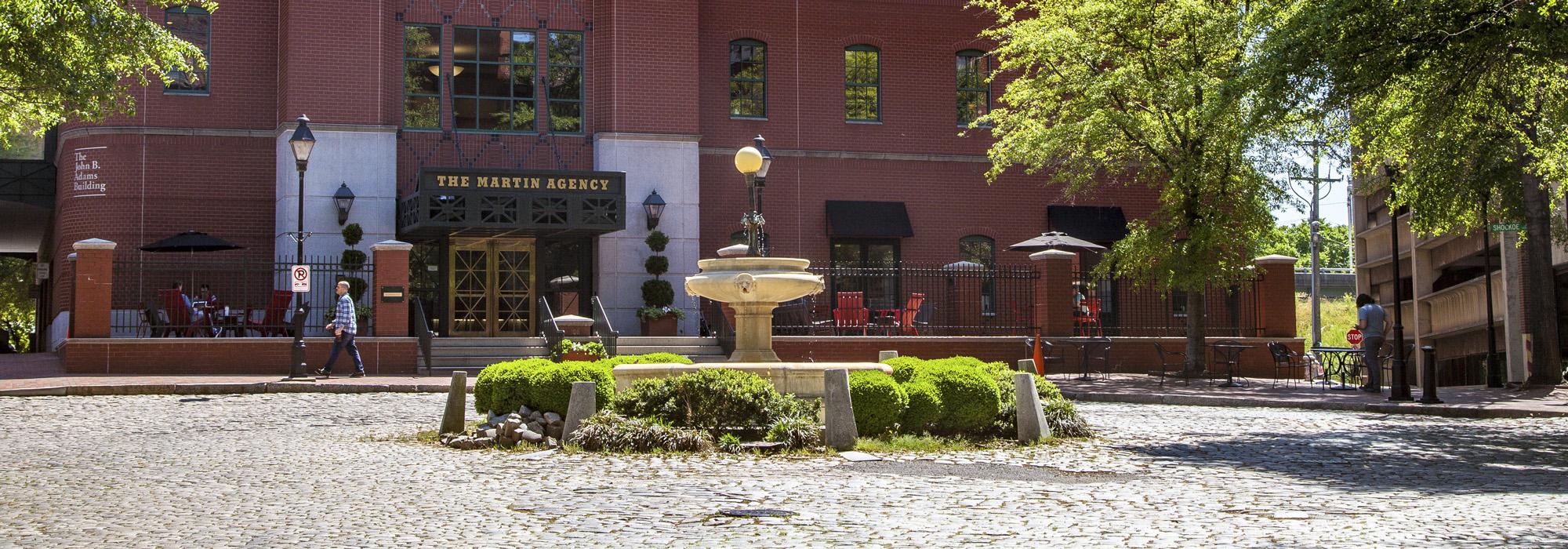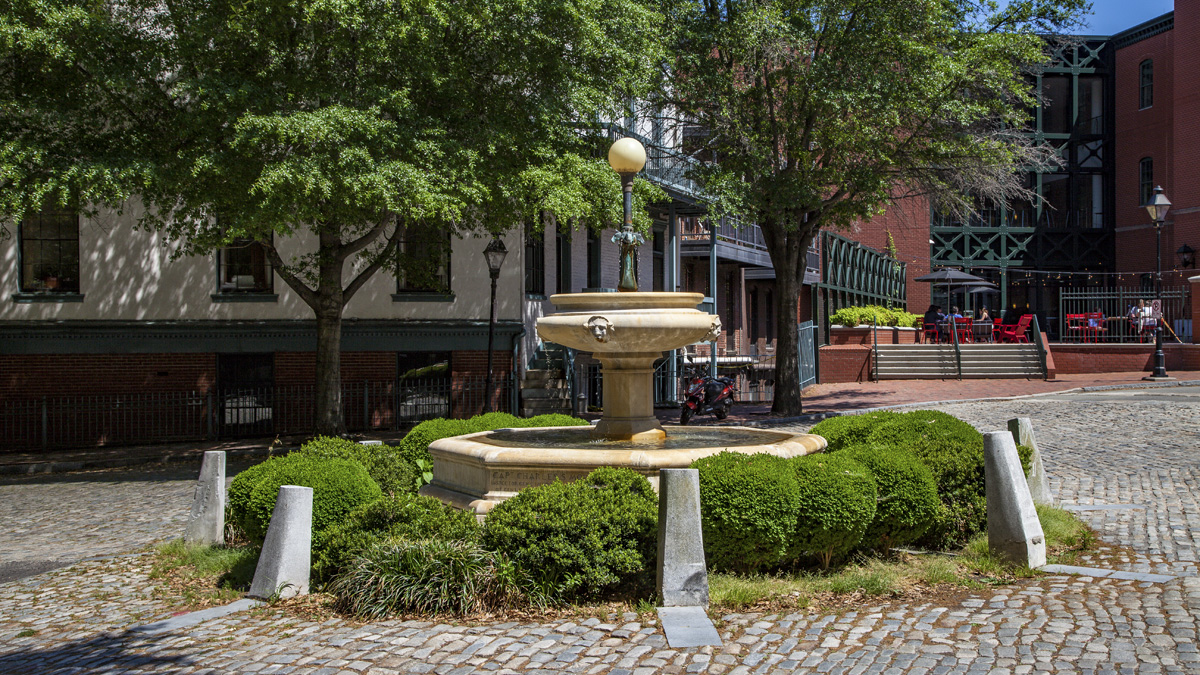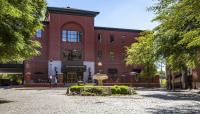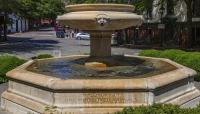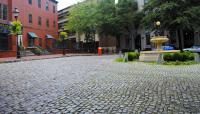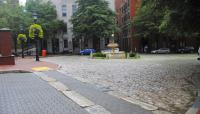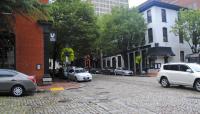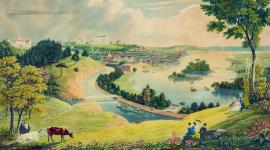Landscape Information
Surrounded by Italianate buildings in an area continuously used since the 1650s, this cobblestone plaza comprises two-tenths of an acre. Named for a corruption of the Powhatan word for stone in reference to the rocky condition of the adjacent James River, Shockoe Slip was a narrow passage that provided access to the Kanawha Canal. Tobacco storage buildings, warehouses, and other industrial facilities, destroyed in the Evacuation Fire of 1865, were rebuilt during post-War Reconstruction. After the canal fell into disuse in 1880, activity in the area slowly declined. The industrial nature of the Slip shifted in 1970 as Richmonders transformed the deteriorating area into a vibrant, mixed-use district anchored by the plaza.
Today the plaza functions as a small traffic circle centered on the two-tiered fountain installed in 1909. Originally intended as a watering trough for horses, the fountain features an octagonal lower pool and a bowl-shaped upper pool with an ornamental waterspout supporting a globe. Both the waterspout and the bowl are adorned with horse heads and anthropomorphic faces that release water into the lower pool. The fountain sits atop a circular base bordered by shrubs and sedge grass as well as small stone bollards to protect the fountain from traffic. Linear stones extend from the bollards, creating a radial pattern that expands into the surrounding cobblestone paving. Granite curbs border the cobblestone and bound the narrow brick sidewalks shaded by tall willow oaks. The Shockoe Slip Historic District was listed in the National Register of Historic Places in 1972.



